|
Genres, Themes, Actors, and Directors:
- Allan Dwan Films
- John Agar Films
- John Wayne Films
- Richard Jaeckel Films
- World War II
Response to Peary’s Review:
Peary writes that this “excellent war movie” — helmed by veteran director Allan Dwan — features “John Wayne giving an Oscar-nominated performance” as a tough sergeant who “is detested by his green troops until they learn that he is strict for their own good and truly feels love and responsibility for his platoon.”
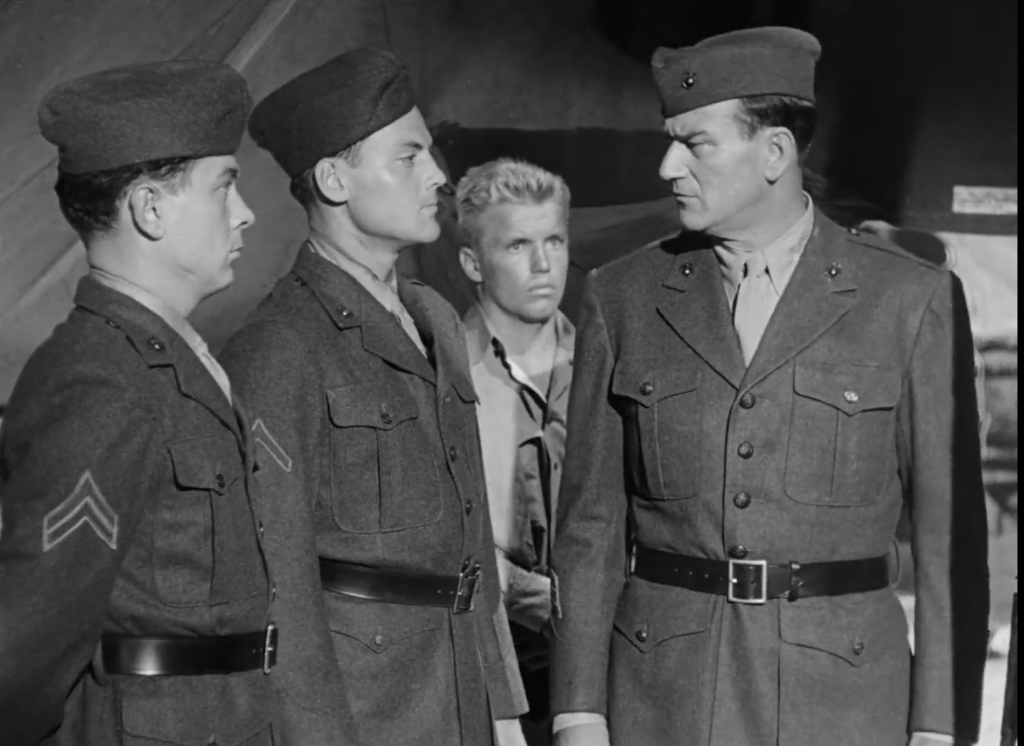
Peary points out that while “there are several trite non-combat scenes,” “others are quite special,” including “Wayne teaching a recruit how to use his bayonet by dancing with him”:
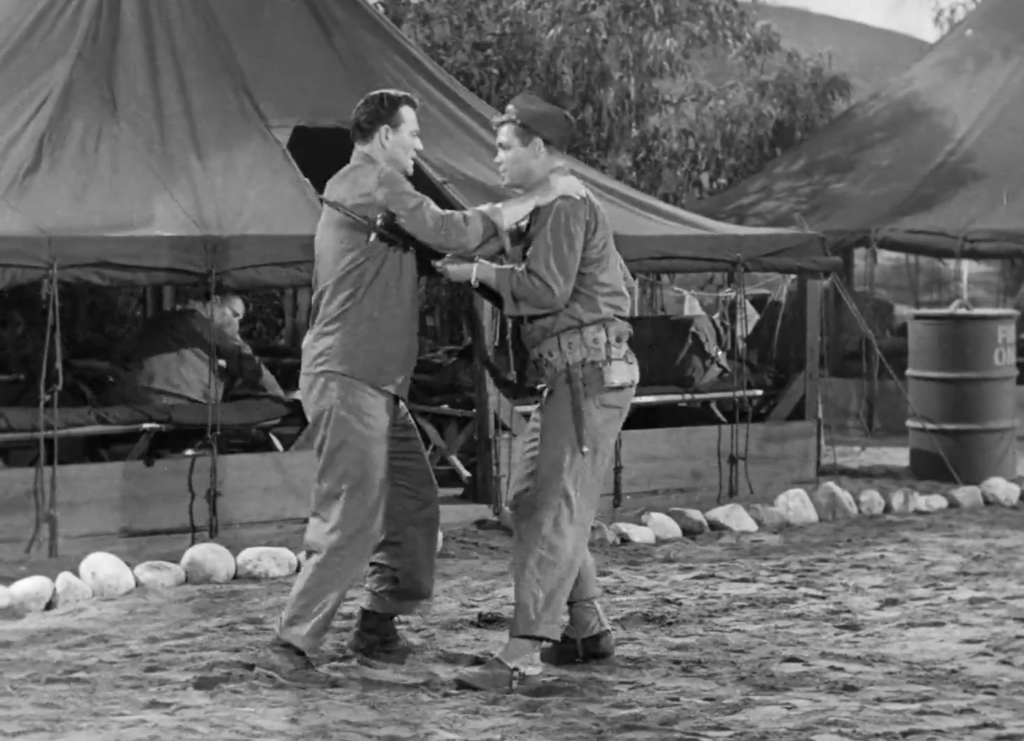
… and “Wayne visiting a prostitute and helping feed her baby”:
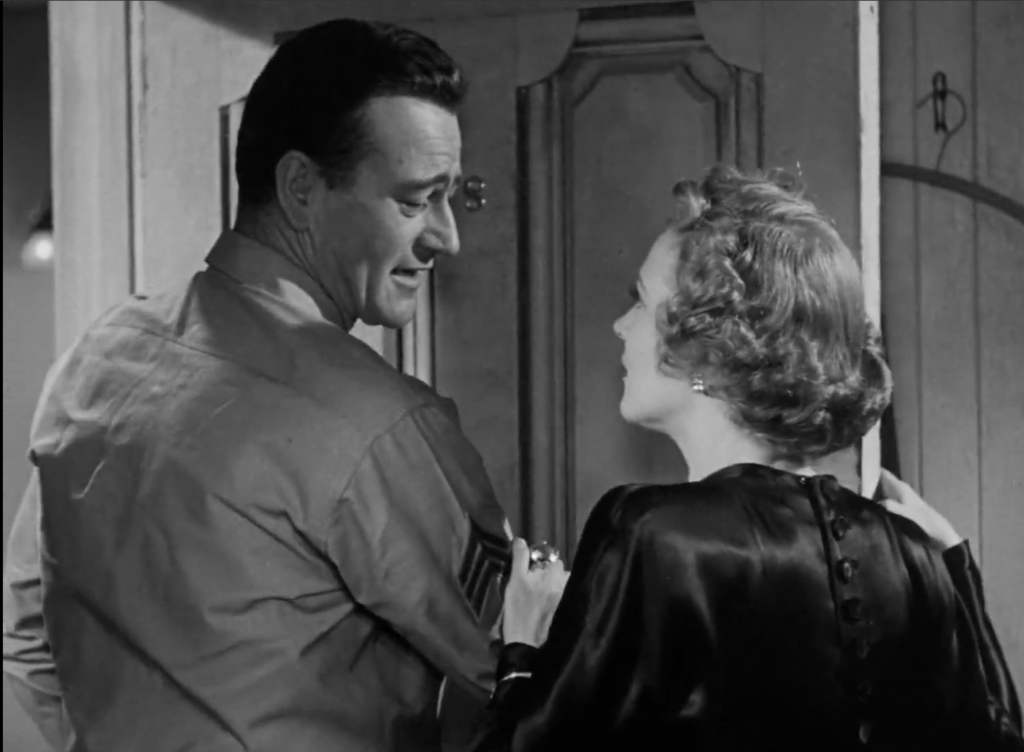
However, he points out that “the battles of Tarawa and fire-ravaged Iwo Jima are definitely the picture’s highlights”:
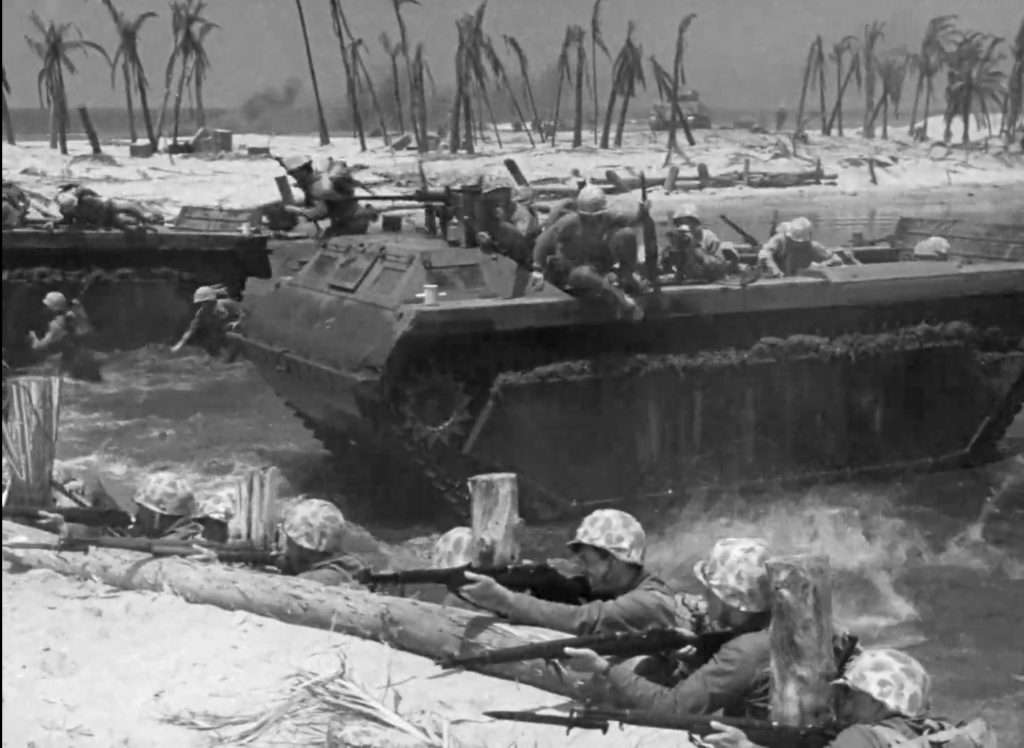
… and he notes that “they are spectacularly directed by Dwan, who adds to the authenticity by using actual war footage with his fiction”:

He adds, “Significantly, being a soldier in battle is shown to be terrifying,” and “the film shows that for men to move forward, others must sacrifice their lives: nothing in war is accomplished without casualties.”
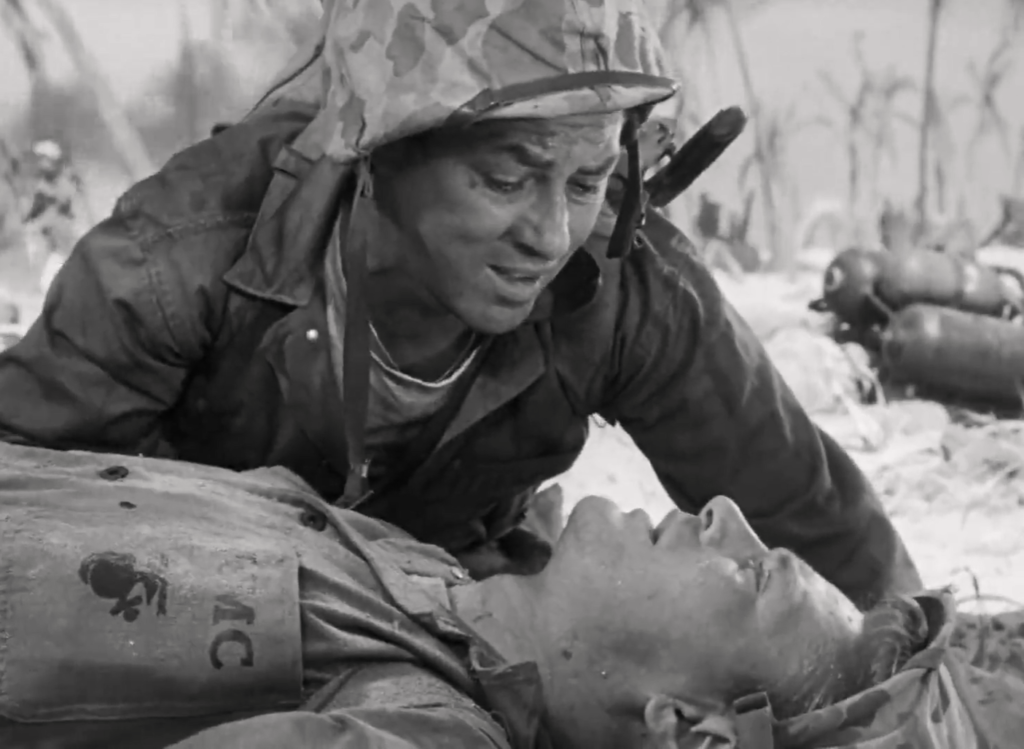
I’m not a fan of the tense “father-son” dynamics present between Wayne and Agar, which feels like simply a narrative convenience:
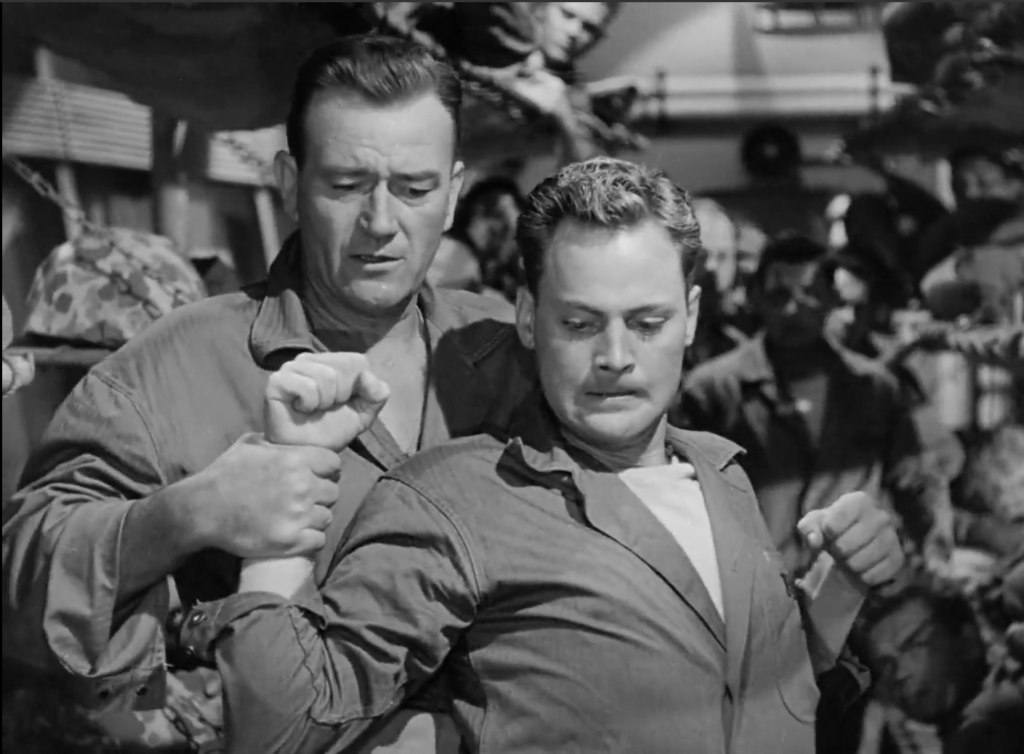
… and Agar’s rapid-fire romance with Mara is (necessarily) under-developed:
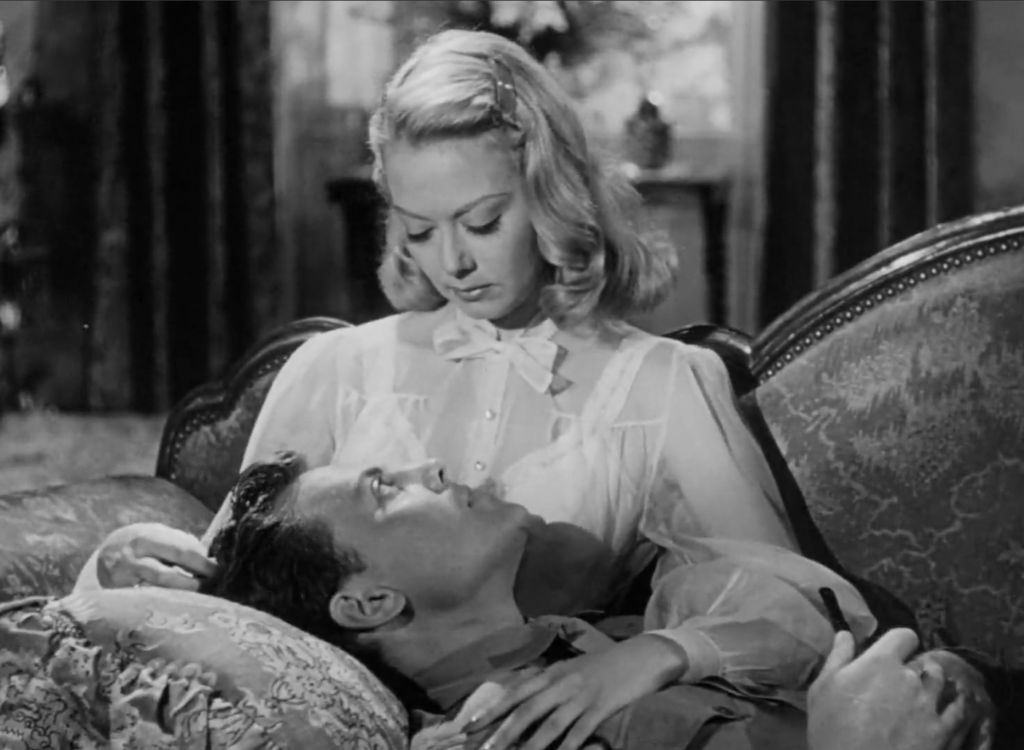
However, I agree with Peary that this remains a well-made war film with brutally realistic battle sequences, and should be seen once by all film fanatics.
Notable Performances, Qualities, and Moments:
- Reggie Lanning’s cinematography
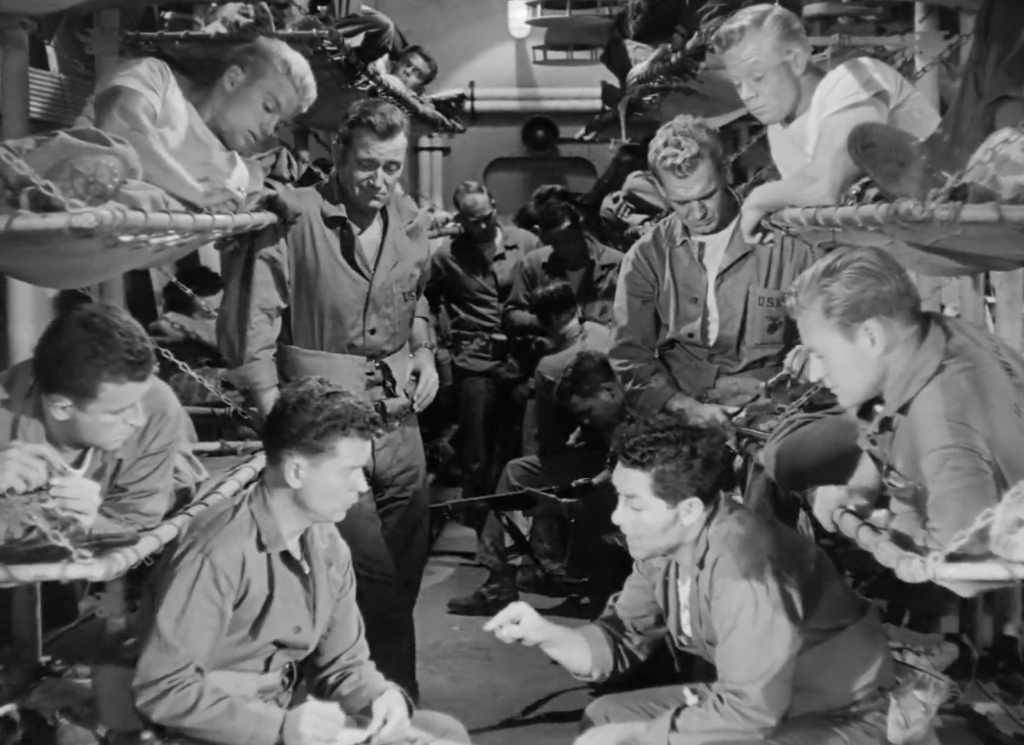

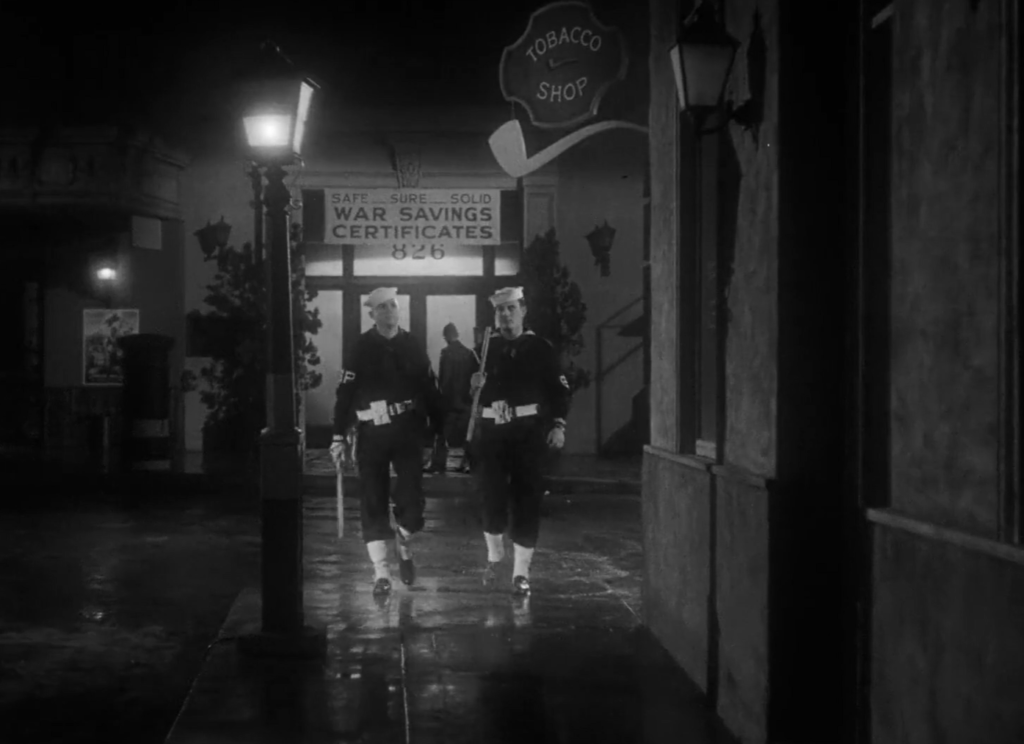
- Impressive recreations of Tarawa and Iwo Jima
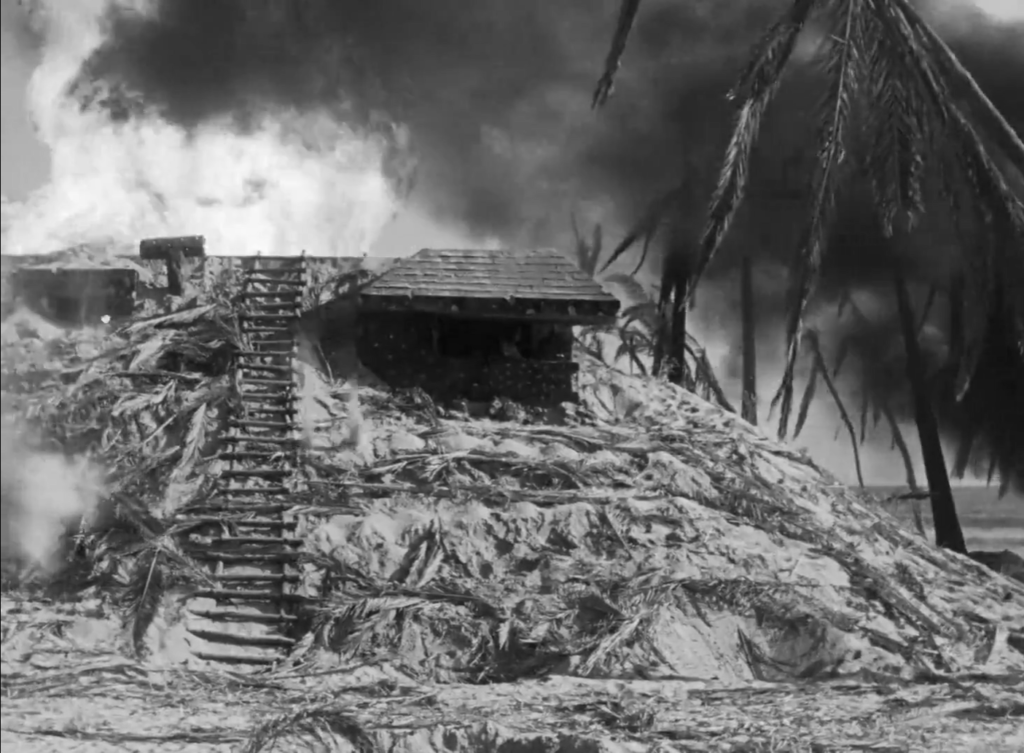
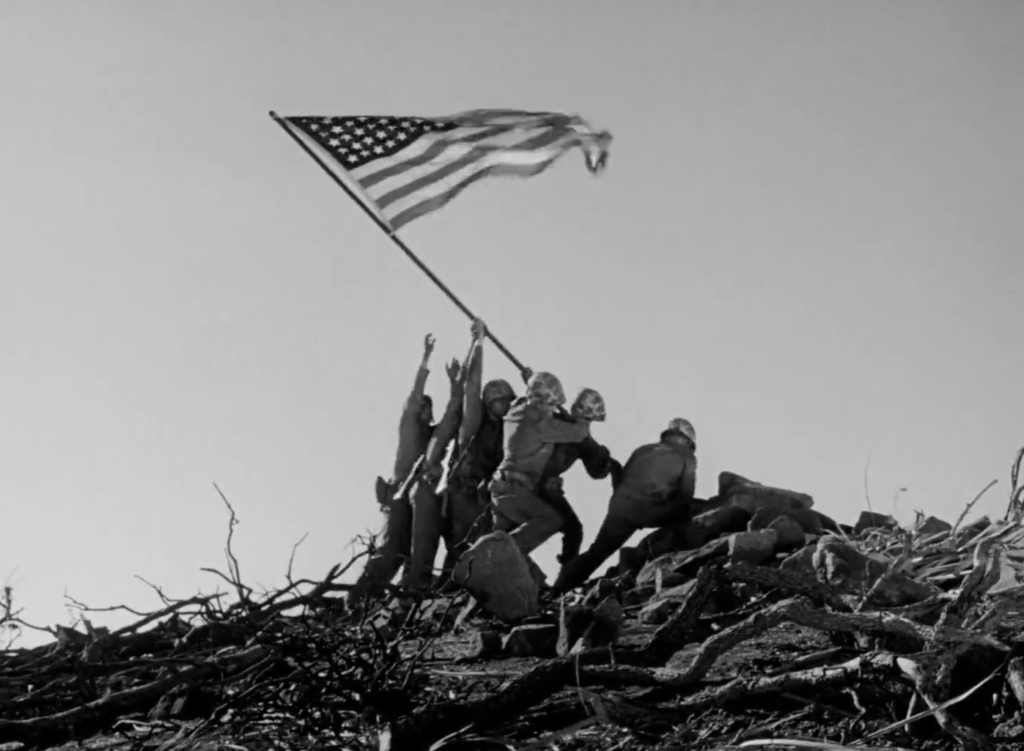
- Near-seamless editing of historic footage with fictional footage
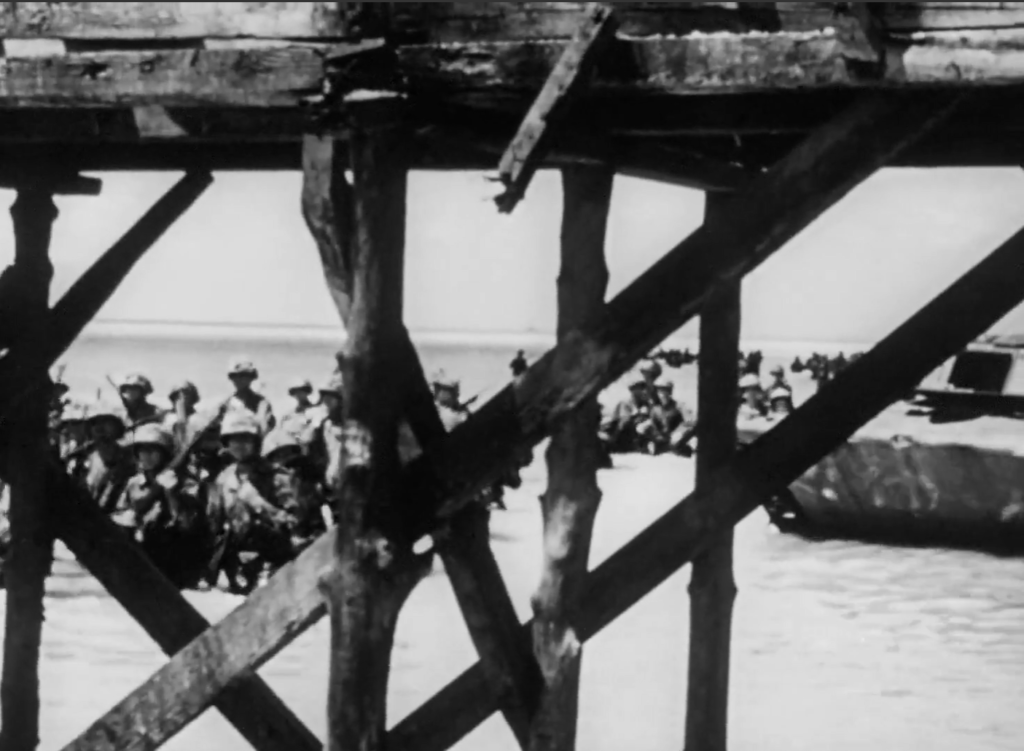
Must See?
Yes, simply for its historical importance and, specifically, the fighting sequences.
Categories
Links:
|
One thought on “Sands of Iwo Jima (1949)”
Not must-see.
It’s not a terrible film by any means – and those who follow WWII films will want to check it out – but there are other movies in this group which are more representative. This one has a little too much emphasis on the personal lives and exchanges of the characters. Not that that’s a bad thing but it somehow makes the overall film less compelling somehow.
Like ‘Battleground’, the film’s second half is better. Sometimes the film is a jarring blend of genuine combat footage edited with obvious stage-bound sequences. But the last 10 minutes are particularly startling.
Wayne’s Oscar nom doesn’t seem warranted.
The iconic image that ends the film is justifiably significant. But this particular film is an optional supplement.